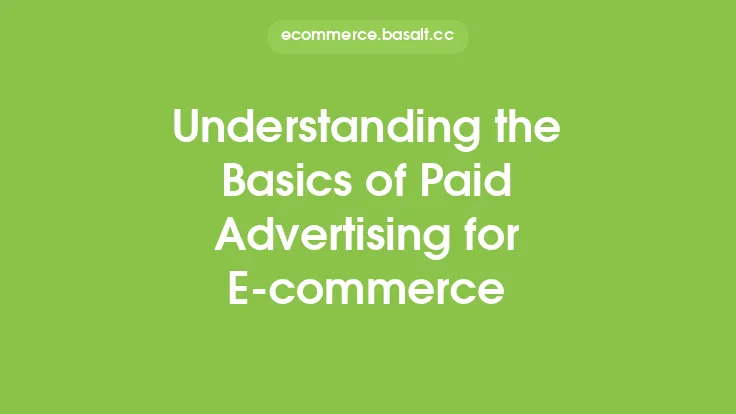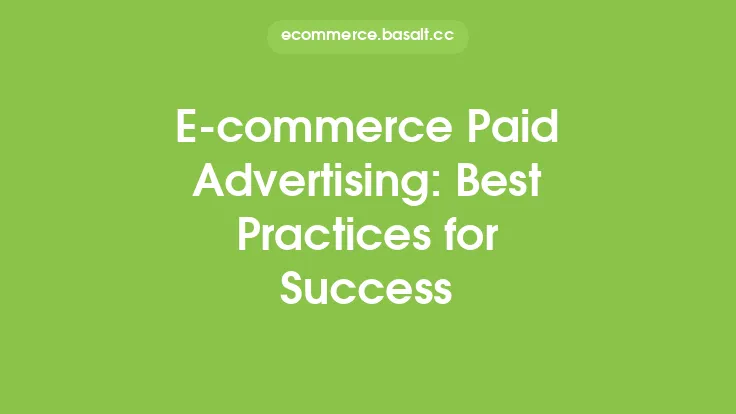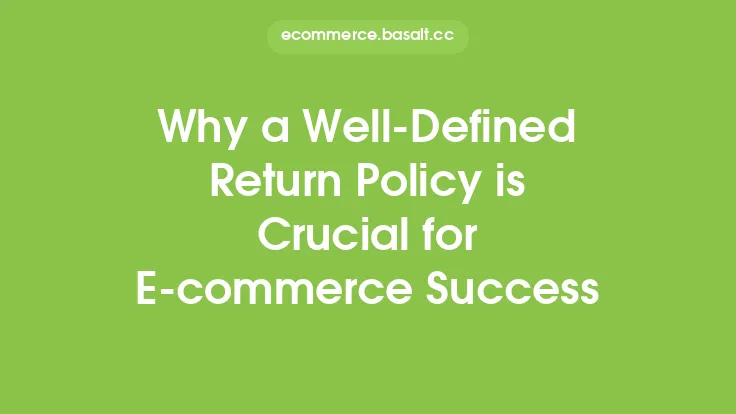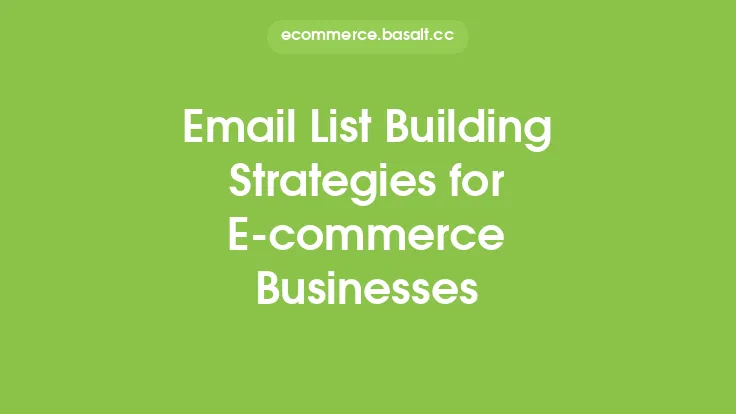In today's digital landscape, e-commerce businesses face intense competition, making it challenging to stand out and reach their target audience. One effective way to overcome this hurdle is by leveraging paid advertising. Paid advertising has become a crucial component of e-commerce marketing strategies, enabling businesses to increase brand awareness, drive website traffic, and ultimately, boost sales and revenue. With the ever-increasing number of online shoppers, paid advertising has become an essential tool for e-commerce businesses to stay ahead of the competition and achieve their marketing goals.
Benefits of Paid Advertising for E-commerce Businesses
Paid advertising offers numerous benefits for e-commerce businesses, including increased brand visibility, improved website traffic, and enhanced conversion rates. By utilizing paid advertising channels such as Google Ads, social media ads, and native ads, e-commerce businesses can reach their target audience more effectively, increasing the likelihood of driving sales and revenue. Additionally, paid advertising allows businesses to track and measure the performance of their ads, enabling them to make data-driven decisions and optimize their marketing strategies. This level of transparency and accountability is unparalleled in traditional forms of advertising, making paid advertising an attractive option for e-commerce businesses.
How Paid Advertising Works
Paid advertising works by allowing businesses to create and display ads on various online platforms, such as search engines, social media sites, and websites. These ads are typically displayed to users who are searching for specific keywords or have shown interest in a particular product or service. The ads are usually paid for on a cost-per-click (CPC) or cost-per-thousand impressions (CPM) basis, ensuring that businesses only pay for the ads that are actually viewed or clicked on by users. This model enables businesses to reach their target audience more effectively, increasing the likelihood of driving conversions and sales. Furthermore, paid advertising platforms provide businesses with a range of targeting options, including demographic, geographic, and behavioral targeting, allowing them to tailor their ads to specific audience segments.
Types of Paid Advertising Channels
There are several types of paid advertising channels that e-commerce businesses can utilize, each with its unique benefits and advantages. Google Ads, for example, is a popular paid advertising platform that allows businesses to create and display ads on Google's search engine and other websites. Social media ads, on the other hand, enable businesses to reach their target audience on platforms such as Facebook, Instagram, and LinkedIn. Native ads, which are designed to match the form and function of the platform they are displayed on, are another effective way to reach users. Additionally, businesses can also utilize influencer marketing, affiliate marketing, and email marketing to reach their target audience and drive sales.
Best Practices for Paid Advertising
To get the most out of paid advertising, e-commerce businesses should follow best practices such as setting clear marketing goals, targeting the right audience, and creating high-quality ad content. It's also essential to track and measure the performance of ads, using metrics such as click-through rates, conversion rates, and return on ad spend (ROAS) to optimize marketing strategies. Furthermore, businesses should ensure that their website and landing pages are optimized for conversions, providing users with a seamless and intuitive experience. By following these best practices, e-commerce businesses can maximize the effectiveness of their paid advertising campaigns and achieve their marketing goals.
Common Challenges and Mistakes
Despite the many benefits of paid advertising, e-commerce businesses often face common challenges and mistakes that can hinder the effectiveness of their campaigns. One of the most significant challenges is ensuring that ads are targeted to the right audience, as poorly targeted ads can result in low click-through rates and conversion rates. Another common mistake is failing to track and measure the performance of ads, making it difficult to optimize marketing strategies and achieve a positive return on investment (ROI). Additionally, businesses may struggle to create high-quality ad content that resonates with their target audience, or fail to optimize their website and landing pages for conversions. By being aware of these common challenges and mistakes, e-commerce businesses can take steps to avoid them and maximize the effectiveness of their paid advertising campaigns.
Future of Paid Advertising
The future of paid advertising looks promising, with emerging trends and technologies such as artificial intelligence (AI), machine learning (ML), and voice search set to revolutionize the way businesses approach paid advertising. As AI and ML become more prevalent, businesses will be able to utilize more sophisticated targeting options and ad personalization, increasing the effectiveness of their campaigns. Voice search, on the other hand, will require businesses to adapt their paid advertising strategies to accommodate the growing number of voice-activated searches. Additionally, the rise of new paid advertising channels such as podcast ads, video ads, and augmented reality (AR) ads will provide businesses with more opportunities to reach their target audience and drive sales. By staying ahead of these emerging trends and technologies, e-commerce businesses can ensure that their paid advertising campaigns remain effective and achieve their marketing goals.





